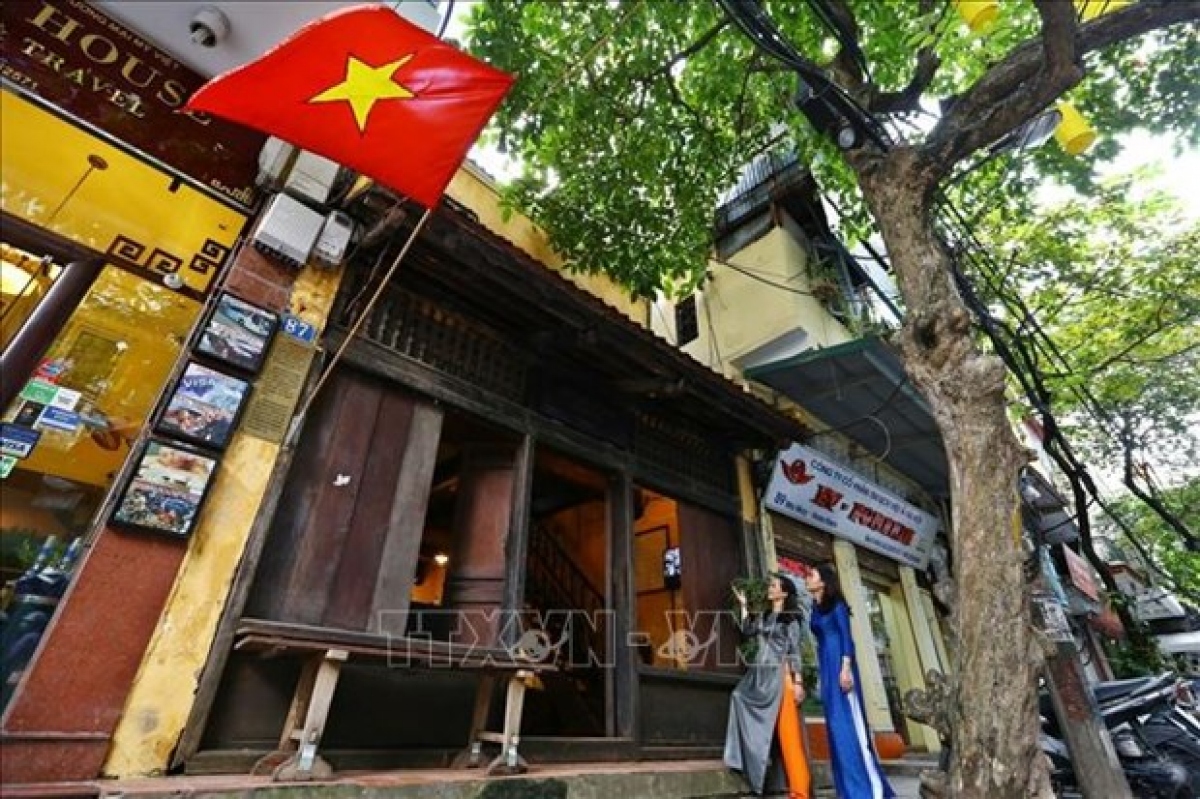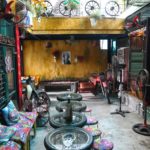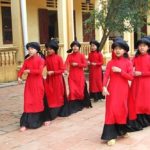The Old Quarter, covering an area of 82 hectares, is a treasure trove of culture, history, and architecture of Hanoi and the nation. It is comprised of 10 wards of Hoan Kiem district, and offers insight into Vietnam’s past and present. Visitors to the Old Quarter can explore its numerous monuments, temples, and markets, or wander its winding streets and delight in its unique atmosphere.
It is known as an ancient urban heritage, associated with the formation and development of Thang Long – Hanoi, boasting a range of handicrafts and trades that make up the unique guilds that define the city’s inhabitants.
The Old Quarter of Hanoi is a popular destination for tourists and locals alike, spanning 79 streets and bounded by Hang Dau Street to the north, Phung Hung Street to the west, Tran Quang Khai and Tran Nhat Duat Streets to the east, and the streets of Hang Bong, Hang Gai, Cau Go, and Hang Thung to the south. This vibrant area is home to an estimated 121 temples, pagodas, and shrines, as well as more than 200 historic houses that hold particular importance. A visit to the Old Quarter is a must for any traveler to Hanoi.
The development and urbanization requirements of a modern city pose significant obstacles to those values.
Hoan Kiem district’s authorities have paid special attention to restoring and embellishing 22 monuments and 24 ancient houses. The urban technical infrastructure system has also been upgraded.
The implementation of a project to restore festivals in Hoan Kiem district’s Old Quarter is a testament to the district’s commitment to preserving its intangible cultural heritage. A total of 14 festivals have been successfully restored, comprising seven district-level festivals and seven ward-level festivals.
Notably, the role of local residents in protecting cultural heritage has been given greater importance, while a cooperation mechanism between the community, businesses, and the local government in managing, conserving, and enhancing cultural heritage value has been established.
Tran Thuy Lan, Deputy Head of the Management Board of Hoan Kiem Lake and Old Quarter, recently shared that her agency regularly organizes cultural and art programs, as well as other activities, at the relic sites in the district. They focus on introducing the lifestyle of Hanoians, restoring the jewelry festival, arranging periodical traditional music performances, and introducing traditional craft villages and craft streets in the old quarter.
These programs have seen active engagement of the community, contributing to the work sustainably and for the long term, she emphasized.
Resources have been focused on renovating structures left from the French colonial era, which dates back to around a century ago. For example, the Hoan Kiem District Police Headquarters (No.2 Trang Thi Street), the Cua Dong Ward Police Headquarters (No. 18 Nguyen Quang Bich Street), the June 1st Kindergarten (23 Nguyen Quang Bich Street) and the Trung Vuong Middle School (26 Hang Bai Street) have all been subject to conservation projects. These projects have given a much-needed facelift to the architectural works in the Old Quarter, helping to introduce and promote the heritage value of Hanoi to the people.
Currently, Hoan Kiem District is investing in renovating the architecture and landscape of Trang Tien Street and giving the finishing touches to a project to restore the villa at 49 Tran Hung Dao Street.
Besides giving a facelift to its architectural beauty, the project also seeks to enhance the area’s cultural identity and historical significance. It is expected that the restoration of the villa will provide visitors with a unique glimpse of the capital’s past.
The project, which began in 2020, is anticipated to be completed by the end of 2021, bringing a new level of vibrancy and life to the area.
Chairman of the People’s Committee of Hoan Kiem district, Pham Tuan Long, stated that the authorities and people of the city, in general, and Hoan Kiem district, in particular, attach great importance to and are determined to conserve and promote the cultural, historical, and architectural heritage values of the Old Quarter. This is seen as a key task and responsibility of both the authorities and the community.
Conserving, restoring, and promoting the heritage values of the Old Quarter have helped not only to promote the socio-economic development in Hoan Kiem district and Hanoi, but also to attract more visitors to the capital city, Long stressed. By implementing specific programmes and plans, this initiative has been successful in achieving this objective.
Enhancing Operational Efficiency at Vietnam’s World Heritage Sites
NDO—Nhan Dan recently published a Vietnamese-language story calling for an immediate end to the organisation of parties in the caverns at Ha Long Bay, which revealed typical shortcomings in the management of World Heritage Sites in Vietnam. But we must look no further than some limitations of the current management model to uncover the main cause of such confusion.









